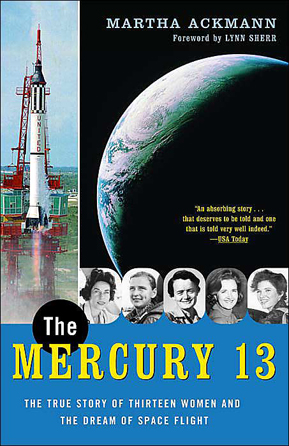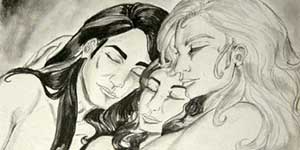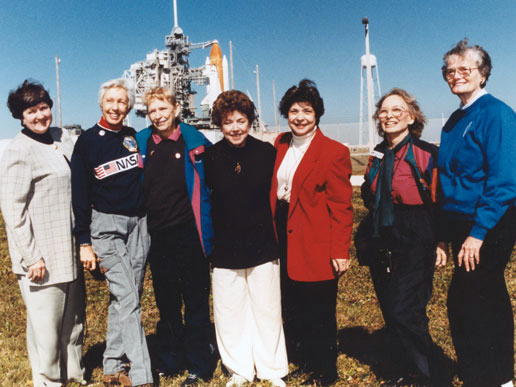Those Who Never Got to Fly
Thursday, July 26th, 2012Sally Kristen Ride, one of the iconic First Others in space flight, recently died at the relatively young age of 61: she was the first American woman to participate in missions. Her obituary revealed that she was also the first lesbian to do so. Like other iconic First Others (Mae Jemison comes to mind), Sally Ride was way overqualified – multiple degrees, better than her male peers along several axes – and she also left the astronaut program way before she needed to (more about this anon). Even so, Ride remained within the orbit of space exploration activities, including founding NASA’s Exploration Office. She was also part of the board that investigated the crashes of Challenger and Columbia; Ride was the only public figure to side with the whistleblowing engineer of Morton-Thiokol when he warned about the problems that would eventually destroy Challenger.
When Sally Ride was chosen for her first mission – by an openly sexist commander who still had to admit she was by far the most qualified for the outlined duties – the press asked her questions like “Do you weep when something goes wrong on the job?” This was 1983, mind you, not the fifties. The reporters noted that she amazed her teachers and professors by pulling effortless straight As in science and – absolutely relevant to an astronaut’s abilities – she was an “indifferent housekeeper” whose husband tolerated it (she was married to fellow astronaut Steve Hawley at the time). Johny Carson joked that the shuttle launch got postponed until Ride could find a purse that matched her shoes.
Ride and Jemison had to function in this climate but at least they went to space, low-orbit though it had become by then. There were forerunners who never got to do so, even though they were also overqualified. I am referring, of course, to the Mercury 13.
This was the moniker of the early core of women astronauts who trained in parallel with the Mercury 7 and outperformed them – except, as is often the case, they did so in makeshift facilities without official support. Here’s the honor roll call of these pioneers whose wings were permanently clipped (the last names are before marriages changed them): Jane Briggs, Myrtle Cagle, Geraldyn Cobb, Janet Dietrich, Marion Dietrich, Mary Wallace Funk, Sarah Gorelick, Jerrie Hamilton, Jean Hixson, Rhea Hurrie, Irene Leverton, Gene Nora Stumbough, Bernice Trimble.
The Thirteen, never officially part of NASA (they were selected by William Lovelace, who designed the NASA astronaut tests, and the initiative was supported by private donations), had to have at least 1000 hours of flying experience. They underwent the same physical and psychological tests as the men and did as well or better at them: all passed phase I, several went on to phase II, and two completed the final phase III. This was not because any failed II or III, but because they didn’t have the resources to attempt them.
When the Thirteen gathered at Pensacola to show their abilities, the Navy instantly halted the demonstration, using the excuse that it was not an official NASA program. The women, some of whom had abandoned jobs and marriages for this, took their case to Congress. Several people – among them “hero” John Glenn – testified that women were not eligible to fly in space because 1) they didn’t have the exact advanced degrees specified by NASA (neither did Glenn, but he got in without a whisper) and the agency would not accept equivalents and 2) they were prohibited from flying military jets (yet women flew such jets from factories to airfields in WWII; when some of the Mercury 13 flew military jets to qualify, NASA simply ratcheted up that rule).
Space aficionados may recall that the Mercury program’s nickname was “man in a can” – the astronauts had so little control that engineers had to manufacture buttons and levers to give them the illusion of it. Nevertheless, NASA made military jet piloting experience a rule because such men, notorious cockerels, were considered to have The Right Stuff – and Congress used this crutch to summarily scuttle the Mercury 13 initiative, although there was brief consideration of adding women to space missions to “improve crew morale” (broadly interpreted).
It took twenty years for NASA to decide to accept women as astronauts. Just before it did so, hack-turned-fanboi-prophet Arthur C. Clarke sent a letter to Time crowing that he had “predicted” the “problem” brought up by astronaut Mike Collins, who opined that women could never be in the space program, because the bouncing of their breasts in zero G would distract the men. When taken to task, Clarke responded that 1) some of his best friends were women, 2) didn’t women want alpha-male astronauts to find them attractive?? and 3) libbers’ tone did nothing to help their cause. Sound familiar?
Women have become “common” in space flight – except that the total number of spacenauts who are women is still 11% of the total. Furthermore, given that the major part of today’s space effort is not going to Mars or even the Moon but scraping fungus off surfaces of the ISS or equivalent, being an astronaut now is closer to being a housecleaner than an hero. We haven’t come so far after all, and we’re not going much further.
I’m one of the few who believe that women’s rights and successful space exploration (as well as maintenance of our planet) are inextricably linked. As I wrote elsewhere:
“I personally believe that our societal problems will persist as long as women are not treated as fully human. Women are not better than men, nor are they different in any way that truly matters; they are as eager to soar, and as entitled. The various attempts to improve women’s status, ever subject to setbacks and backlashes, are our marks of successful struggle against reflexive institutionalized misogyny. If we cannot solve this thorny and persistent problem, we’ll still survive — we have thus far. However, I doubt that we’ll ever truly thrive, no matter what technological levels we achieve.”
This holds doubly for space exploration – for the goals we set for it, the methods we employ to achieve it and the way we act if/when we reach our destinations.
 Addendum: I did not discuss Valentina Tereshkova, who was both the first woman cosmonaut and the first civilian to fly into space. because I wanted to keep the focus of this article on NASA. Nevertheless, I should mention her as well as Sveltana Savitskaya, the first woman to do a space walk, whose first mission preceded that of Sally Ride.
Addendum: I did not discuss Valentina Tereshkova, who was both the first woman cosmonaut and the first civilian to fly into space. because I wanted to keep the focus of this article on NASA. Nevertheless, I should mention her as well as Sveltana Savitskaya, the first woman to do a space walk, whose first mission preceded that of Sally Ride.
Sources and further reading
Martha Ackmann, The Mercury 13: The True Story of Thirteen Women and the Dream of Space Flight
Julie Phillips, James Tiptree Jr.: The Double Life of Alice B. Sheldon (one source of the Clarke “distracting breasts” incident and also excellent in its own right)
Site dedicated to the Mercury 13: http://www.mercury13.com/
2nd Image: some of the Mercury 13, gathered to watch the launch in which Eileen Collins was the first woman to pilot a space shuttle mission. Left to right: Gene Nora Stumbough, Mary Wallace Funk, Geraldyn Cobb, Jerri Hamilton, Sarah Gorelick, Myrtle Cagle, Bernice Trimble.







